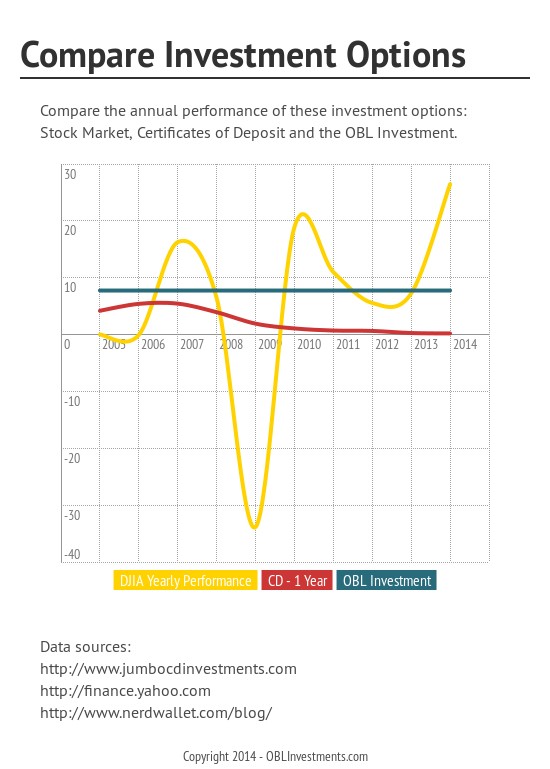15 Types of Risk that affect your Investments
Post on: 4 Июнь, 2015 No Comment

When someone asks me “tell me some risk free investment which can generate good returns” – I get confused. Why? Because according to me there are n number of risks in investing & I am not sure which risk he is talking about. Warren Buffett Said “Risk comes from not knowing what you are doing” so today let’s risk ourselves to understand different types of risks that are associated with equity & debt investments.
What is Risk ?
What comes to your mind when someone says RISK or this investment is risky? Risk for most of the people has only one meaning loosing the principal amount. In scientific language “Risk may be taken as downside risk. the difference between the actual return and the expected return (when the actual return is less), or the uncertainty of that return.”
Image Credit Onemint
2 most basic types of risk
Investment is related to saving but saving does not mean investment. (read difference between saving & investment ) Investment is about deferring your present consumption for future goals with expectation of security of amount & getting returns. So there are 2 basic risks in it:
Investment Risk – it is about possibility of losing money. Today you invest Rs 5 lakh in equity & get Rs 4 after 3 years. Investment risk can be measured by Standard Deviation .
Inflation Risk – it is losing purchasing power of money. In 2011 you invest Rs 5 Lakh in debt & get Rs 10 Lakh in 2020. But your Rs 10 Lakh is not able to buy you the item which was available for Rs 4 Lakh in 2011.
Check below picture which tells you that with time (in equity) Investment risk is reduced & at some point of time it turns to zero. But on other hand Inflation risk increases with the time & there is no end to it. Or we can say in short term risk is volatility of assets & in long term it is loss of purchasing power.
Systematic Risk Vs Unsystematic Risk
There is one more way to classify financial risk – is risk will impact whole economy or particular company or a sector.
Systematic Risk – it is also known as market risk or economic risk or non diversifiable risk & it impacts full economy or share market. Let’s say if interest rate will increase whole economy will slow down & there is no way to hide from this impact. As such there is no way to reduce systematic risk other than investing your money in some other country. Beta can be helpful in understanding this.
Unsystematic Risk – it affects a small part of economy or sometime even single company. Bad management or low demand in some particular sector will impact a single company or a single sector – such risks can be reduced by diversifying once investments. So this is also called Diversifiable Risk.
Different types of Risk in Investments
We have divided it into 2 parts – risk in debt & other risks. It is a big investment mistake if someone feels that there is no risk in debt investments – people who have ignored this in past have paid huge price.
Risk in Debt Investments
Credit Risk – it is also called default risk. As the first pic of this article shows that people only look at returns & not risk in it. Let me ask if SBI bank is paying some 9% interest & some NBFC NCD is paying 12.5% which one you choose. If you think 12.5% NCD will be the right choice – you are ignoring the credit risk. Credit risk is when company doesn’t have capacity to pay principal or interest amount. In past there is a long list of companies which defaulted like CRB Capital, Escorts, Morpen Labs etc. Even Bank FDs have credit risk – there is guarantee only upto Rs 1 lakh. Credit risk is close to zero in Government Bonds.
This is most common & most important risk in debt – to understand it better read “Why debt will always give negative returns ”
Interest Rate Risk – change in interest rate will impact price of bonds (or NCDs). There is negative relation between price of bond & interest rates – if interest rate will increase price of bond will go down & vice versa. This risk can be reduced if you hold bonds till maturity. Interest rate risk also affects Bank Fixed Deposit investor – he was having Rs 5 Lakh & he invests at a prevailing rate of 9%. What will happen if interest rate increase to 10% he will be losing 1% interest.
Reinvestment Risk – Let’s assume that you made investment in a bond with 9% yearly interest. Interest rate reduced to 7% in 1 year so next year when you received interest & went back to invest it was invested at lower rate.
Liquidity Risk – if you have some bonds that you would like to sell for immediate requirement but there is no buyer or fewer buyers than sellers – you may have to sell your bonds at discount.
Country risk – it is also called sovereign risk. As you read in Credit risk “Credit risk is close to zero in Government Bonds” but close to zero doesn’t mean zero. What about present condition of PIGS – Portugal, Ireland, Greece & Spain. Even in India there have been instances where fixed deposits issued by govt backed companies deferred maturity payments by issuing additional bonds.
Inflation Risk – as mentioned in starting of the article. Inflation is your biggest enemy.
Other Investment Risks
Exchange Rate Risk – If you invest in debt or equity of some other country you will face exchange rate risk. If some of your US investments earn 10% in one year in dollar terms but the same year dollar loose 2% in comparison to rupee – your actual return will be 8%. NRIs are heavily impacted by this risk & they should make financial decision after considering it.

Timing Risk – I don’t think I need to explain it but only one suggestion don’t take this risk.
Volatility Risk – equity prices keep fluctuating on day to day basis. This can be measured by standard deviation .
Political Risk or government risk or regulator risk – What will happen if you have invested in a particular sector & government comes out with an adverse policy. This risk can be clearly seen in sugar or oil & gas sector.
Valuation Risk – You may find a great company with great future prospects but if present valuation is too high you will not make money. Infosys was good company in 2000 & great company in 2005 but its price of 2005 peak was less than 2000.
Business Risk & Technology Risk – couple of years back pagers & typewriters were important part of once life but these products are no more there. Same happened with Audio tapes & floppies – what would have happened to these companies.
Execution risk the time between when you see your price and when the trade actually goes to the market.
Concentration Risk – when you invest in single company (I know a person who invested all his long term savings in Satyam), single fund or single asset management company you are actually taking a huge risk.
Information Risk – This is again a very important risk to understand. You take your financial decisions based on some information this information is provided either by manufacturer of financial products or agents/distributors/advisors or media. What will happen if this critical information is wrong or not complete? If you think this only happens at the time of buying insurance – you are absolutely wrong. This can happen in any financial product including mutual fund (you see advertisement of 100% return in a year – these are point to point returns & completely misguiding), taking loan (interest rate shown 9% but actually it is 16% it is game of Flat rate & Reducing rate) or even simple products like tax free infrastructure bonds .
Someone rightly said “If you torture numbers enough, they will confess to almost anything” – read extract from Economic Times about IDFC Infrastructure Bond advertisement:
“It is a plain-vanilla infrastructure bond issue that offers tax relief and a modest return to investors. However, the advertisement for IDFC bond offer has investment experts questioning some claims. Most of them claim the advertisement is grossly confusing, misinforming the investors and total misrepresentation of facts.
The bone of contention is IDFCs claim that the issue offers tax-adjusted yield of 17.85% to investors. Sure, as always, there is an asterisk, and a qualification that the yield is tax adjusted for investors in the highest tax slab. The trouble, some experts say, they cant verify the claim even after exhausting all financial formulas available in the spreadsheet.”
*(yes this star) – Do you know what this star is called? Asterisk or Aster-RISK – Aster means Star & Risk means anything or everything that is written in this article. If you find this star somewhere try to find hidden things in footnotes.
There are few other risk which impacts you directly or indirectly – institutional risk, operational risk, event risk, company risk, geopolitical risk, sociopolitical risk, counter-party risk, reputation risk, commodity risk, management risk, principal risk, opportunity risk, prepayment risk, call risk, legal risk and I am sure I have missed lot others….
Oh so many risks & you thought only equities are risky. Now from the next time when you say Risk Free Investment – first clarify which risk you are referring to.














